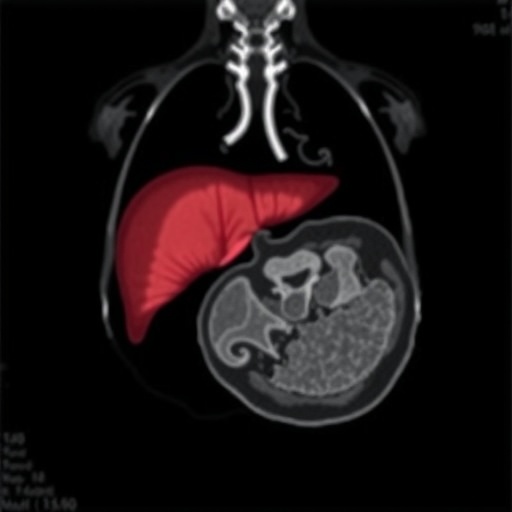In recent years, the healthcare community has increasingly recognized the value of non-invasive diagnostic imaging techniques, particularly in the realm of pediatric medicine. Among the various modalities available, shear wave elastography (SWE) has emerged as a promising tool for assessing liver stiffness, particularly in children suffering from biliary atresia. This condition, a congenital malformation affecting the biliary tract, can lead to significant liver damage and necessitates timely intervention. The recent study led by Fu, Geng, and Shi addresses critical aspects of the diagnostic performance and reproducibility of SWE in this vulnerable population.
Shear wave elastography represents a technological advancement in ultrasound-based imaging techniques. By measuring the velocity of shear waves traveling through liver tissue, SWE can provide valuable information about tissue elasticity. This capability is particularly advantageous for assessing liver stiffness, an important biomarker indicative of liver scarring or fibrosis. The conventional methods for evaluating liver conditions often involve invasive liver biopsies, which carry inherent risks, especially in children. As such, the advent of SWE heralds a non-invasive pathway to more accurately gauge liver health.
The research conducted by Fu and colleagues highlights the significance of SWE’s diagnostic capabilities. The team meticulously evaluated the diagnostic performance of this technique when applied to children diagnosed with biliary atresia. The study found that SWE demonstrated strong sensitivity and specificity for detecting hepatic fibrosis, setting a new gold standard in non-invasive liver imaging. This finding not only reinforces the utility of SWE in clinical settings but also invites further exploration into its application across various liver conditions.
Throughout the study, the authors employed a robust methodology to ensure the reliability of their findings. Participants were carefully selected, and the SWE technique was rigorously tested. The emphasis on meticulous patient selection enhances the study’s validity, paving the way for future research to adopt similar standards. Furthermore, the need for reproducibility in diagnostic testing cannot be overstated, especially in pediatric populations, where variability can significantly impact clinical decision-making.
One remarkable aspect of the findings is the reproducibility of shear wave elastography measurements. The study revealed high intra- and inter-observer reliability, underscoring the consistency of SWE readings across different trained personnel. This reproducibility is particularly crucial in pediatric settings, where patient cooperation might vary. It confirms that healthcare providers can trust the results derived from SWE, allowing for better-informed clinical decisions.
Moreover, the implications of these findings extend beyond mere diagnostic utility. By streamlining liver assessment processes, clinicians can enhance the overall management of biliary atresia in children. Early and accurate identification of liver stiffness can facilitate timely interventions, thereby potentially improving patient outcomes. This is especially vital considering that delayed treatment can result in further complications, including advanced fibrosis and cirrhosis.
The authors of the study also delved into potential challenges associated with shear wave elastography. While the technology shows great promise, it is imperative to be aware of the factors that may influence SWE readings. Variations in imaging techniques, patient positioning, and even equipment performance can lead to discrepancies in results. Addressing these variables ensures that SWE can maintain its role as a reliable diagnostic tool.
Supporting the findings of Fu et al., an increasing body of literature continues to explore the various applications of SWE beyond biliary atresia. Its implementation has been studied in adult populations, extending its potential to encompass a broader spectrum of liver diseases. As research progresses, it is anticipated that SWE will not only enhance diagnostic capabilities but will also pave the way for individualized treatment plans based on precise liver assessments.
The collaborative efforts among researchers, clinicians, and institutions are crucial for advancing the knowledge surrounding shear wave elastography. This study and its implications showcase the importance of interdisciplinary research in pediatric hepatology. As practitioners adopt SWE into routine practice, ongoing training and evaluation of the technique will be necessary to maximize its potential.
Furthermore, the need for public awareness about liver health in children cannot be overstated. Conditions such as biliary atresia may not be widely recognized, leading to late diagnoses. Heightened awareness can empower parents and caregivers to seek medical advice if they notice concerning symptoms, such as jaundice in infants. Ultimately, enhancing the understanding of liver conditions can foster earlier detection and intervention.
Technological advancements continue to play a crucial role in shaping the future of pediatric diagnostics. As imaging technologies like SWE evolve, they hold the promise of revolutionizing how liver health is assessed. Ensuring that such advancements are accessible to all pediatric patients remains a critical goal for the healthcare community.
In conclusion, the study led by Fu, Geng, and Shi serves as a pivotal contribution to the field of pediatric radiology and hepatology. The strong diagnostic performance and reproducibility of shear wave elastography for assessing liver stiffness in children with biliary atresia have substantial clinical implications. As healthcare professionals continue to embrace non-invasive diagnostic methods, the aim of improving pediatric liver health can become a reality. With ongoing research, technological improvements, and increased awareness, the potential for positive outcomes in this demographic remains high.
Enhancing the dialogue between researchers, practitioners, and patients is vital for the success of innovations like shear wave elastography. As efforts are concentrated on leveraging technology for better pediatric care, the trajectory of liver disease management will undoubtedly take a turn towards more effective and patient-friendly approaches.
Subject of Research: Diagnostic performance and reproducibility of shear wave elastography techniques for liver stiffness assessment in children with biliary atresia.
Article Title: Correction: Diagnostic performance and reproducibility of shear wave elastography techniques for liver stiffness assessment in children with biliary atresia.
Article References:
Fu, M., Geng, C., Shi, L. et al. Correction: Diagnostic performance and reproducibility of shear wave elastography techniques for liver stiffness assessment in children with biliary atresia.
Pediatr Radiol (2025). https://doi.org/10.1007/s00247-025-06407-y
Image Credits: AI Generated
DOI:
Keywords: Shear wave elastography, liver stiffness, biliary atresia, pediatric radiology, non-invasive diagnostics.




